
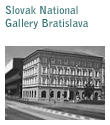 |
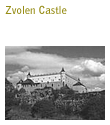 |
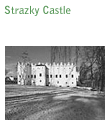 |
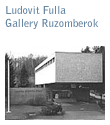 |
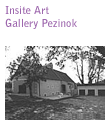 |
|



2010
2009
2006
|
Alojz Stróbl (1856-1926) - The Last Knight of Hungarian Sculpture 5. December 2006 Summary This year we commemorate the 150th anniversary of the birth of Alojz Stróbl (1856 – 1926), a great figure of Central European sculpture from the turn of the 20th century. On this occasion, the Peter Michal Bohúň Gallery in Liptovský Mikuláš in cooperation with the Slovak National Gallery in Bratislava are presenting a comprehensive exhibition of the artist’s oeuvre. The show displays a selection from the sculptor’s most important works included in the Slovak and Hungarian public and private collections. The exhibition catalogue publishes the first full list of Stróbl’s works, takes a comprehensive view of his works in private and public collections, and uses literary and archive sources. Alojz Stróbl was born in 1856 in Kráľová Lehota and died in 1926 in Budapest. He studied at the Academy of Fine Arts in Vienna under Prof. Casper von Zumbusch. In 1881 he settled in Budapest and worked there as a sculptor and teacher until his death. He made his début at the exhibition held at the Society of Fine Arts in 1881. Gradually, he received many commissions for portrait-busts. From 1882, he began to cooperate with the architect Miklós Ybl on the sculptural adornment of the Opera House, and later on other municipal buildings as well (e. g. Music Hall / Vigadó). He gradually became a successful sculptor, much in demand. During his lifetime Stróbl produced around 500 portraits, genre sculptures, gravestones and monuments. He won international recognition with his work Our Mother (1896) and was awarded the Grand Prix at the world exhibition in Paris in 1900. The sculpture represented the “live” portrait of the artist’s mother seated with the family bible in her lap. His portraiture included portraits of numerous figures representing political, cultural and social life in Hungary and Budapest. He became famous for his sculptural portrait of Emperor Franz Josef; its replicas were sited in various parts of the monarchy. Stróbl had a major share in improving the visual image of Budapest. His monuments are sited at Budapest landmarks – Buda Castle (King Matthew Well), St Matthew Church (Equestrian Sculpture of St Stephen), and at several squares (Monument to Sándor Károly, Monument to Mór Jókai – Jókai Square). He created sphinxes and two full-length portraits of the musicians Franz Liszt and Ferenc Erkel for the Opera House. The Monument to János Arany, a major Hungarian writer, is sited in front of the Hungarian National Museum, and he made another variant for Nagykőros. Apart from Budapest, Stróbl’s monuments can be found in Szeged (Sculpture of Stephen Szechényi) and Sopron. The artist was also involved in sepulchral works and created designs for gravestones, particularly for the Kerepesi Cemetery in Budapest where he was also buried. Stróbl made many sculptural designs for gravestones, including those for Mr. Henneberger (1890), Baron Kochmeister (1897), composer Karol Clement (1899), Dezső Szilágyi (1908), Gustáv Keleti (1909), Zsigmund Rajner (1913), Mihály Zichy (1916), Károly Bárczy (1922). His main achievement was the Mausoleum of Lajos Kossuth, (1902-1904), an act of homage paid to this great figure of Hungarian history. Although Stróbl lived and worked in Budapest, he did not lose contact with his birthplace. Beginning with 1893 he regularly returned to Kráľova Lehota particularly in the summer months and built there a summer residence with a studio. He drew inspiration from the local environment shrouded in legends about royal hunts and beautiful nature. Stróbl was an eminent teacher who trained several generations of Hungarian sculptors at his Master School at the Academy of Fine Arts in Budapest. He used to take his students to his birthplace in Kráľova Lehota where they assisted him in his studio. up |
|


© 2005 Slovak National Gallery. All Rights Reserved. Web satori.






























